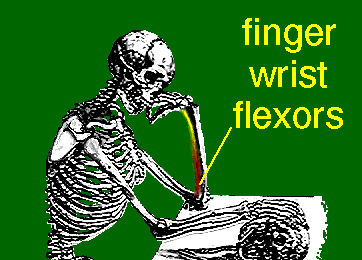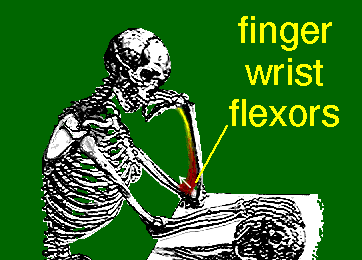
Reconstructive Surgery

Outward Rotation
The Teres Major is a small muscle that
hugs the lateral (outer) edge of the scapula. Running from the bottom point of the scapula it travels to the front of the humerus to attach. That is an orientation that inwardly rotates and depresses the
arm. That action is the same as the power stroke in butterfly swimming.
The lats are far bigger than the teres major and thus nobody but orthopedists notice them.
The Latissimus Dorsi - or Lats - have the exact orientation as the teres major but take origin from the ribs and trunk posteriorly.
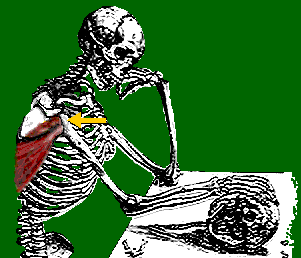
The teres major and lats are so closely parallel that the insertions on the humerus intermingle a bit and can be
detached as a single unit. That dual insertion can be swung
from the front of the humerus to the back. That creates
an outward rotation action from what was an inward
rotation action.
Elbow Flexion
The Zancoli procedure does the same trick with the biceps tendon at the elbow. Detached from the radius, it is repositioned on the opposite side to where it was so as to create pronation. It had produced supination.
But what if there is no biceps action at all? Then one can be built. One must work with what is working, as brachial palsies do not pick out single muscles as a rule. For example the pectoral muscle can be repositioned to become a biceps in certain conditions, but may well be poorly suited in some brachial plexus palsies.
The latissimus dorsi can be detached from the ribs and - pivoting on its attachment at the upper humerus - have the once rib attachment end attached to the biceps tendon at the elbow. That creates an elbow flexor. That same transfer, if attached in the back of the arm, is used to generate triceps power in conditions wherein triceps substitution is needed.
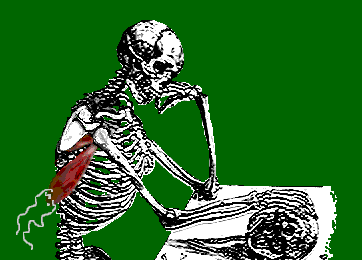
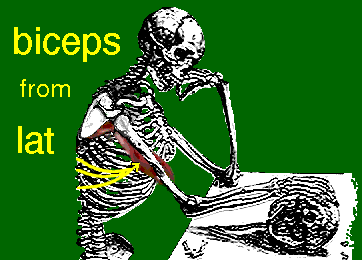
The finger flexors are in two layers and along with the wrist flexors attach not only in the forearm but also above the elbow at the medial condyle. In a real sense, the finger and wrist flexors are already elbow flexors. They can be recruited as elbow flexors by merely stabilizing the wrist or fingers (as with other muscles). Surgically moving the humeral attachment more proximal increases the leverage of those muscles (which at that level are nearly a single unit). Thus weak elbow flexion can be boosted.
